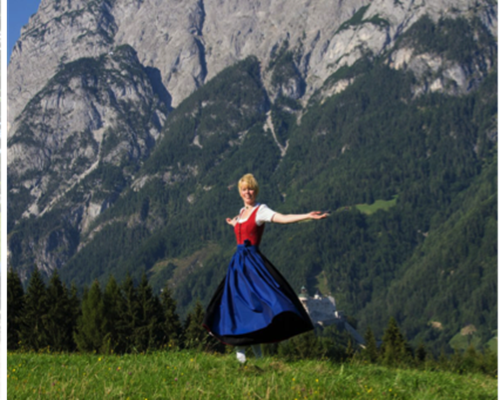
The English word "salary" has its roots in the Latin term salarium, denoting a stipend or
allowance. The latter, in turn, is intricately connected to sal or salt (known as Salz in German),
once acclaimed as white gold and a vital medium of trade in ancient China, Mexico, and Europe.
Beyond its role as the ubiquitous food preservative, salt stands as the quintessential seasoning.
Salzburg, Austria, finds a name trace in the historic salt(z) mines. The Adriatic Sea, with its high
salinity, remains a rich source of salt, evident in the numerous coastal towns adorned with salt
ponds and open salt fields.
Our Bavarian sojourn unfolded as an opportunity to delve into a historical and scientific
narrative on salt, particularly its formation and extraction. Nestled in the Alpine valley near the
Austrian-German border, the Berchtesgaden Salt Mine provided a vivid tableau for exploration.
As the bus ascended towards the old border crossing on that picturesque Saturday afternoon,
the absence of border police welcomed us to a serene landscape adorned with farms and villages
against a backdrop of snow-capped mountains. The Eagle's Nest, identified by the guide as a
mountain residence frequented by Hitler during the Nazi Third Reich era, crowned a summit.
Founded over 500 years ago in 1517, the Berchtesgaden Salt Mine near the alpine town of
Obersalzberg became our gateway to adventure. Clad in miner's attire—long, thick, high-necked
suits adorned with fluorescent stripes—one embarks on a journey that not only shields from the
subterranean chill (12 degrees Celsius) but also safeguards the skin during a thrilling 30-meter
descent into the mine.
The mine's railway transports visitors 650 meters into the mountain, reaching a depth of nearly
120 meters from the surface. Crouched in tight, narrow carriages reminiscent of the fetal
position, one navigates the low, twisting network of caves. The culmination of the subterranean
voyage unfolds in the expansive Salt Cathedral, a cavern where, centuries ago, water seeped in,
reaching the ceiling and dissolving the salt rock to form brine. Today, the salt crystal formations
adorning the rock walls set the stage for a captivating laser sound-and-light show, painting the
history of salt in a palette of colours and a symphony of musical notes.
The evolution of salt mining, once laboriously manual with a drilling rate of 2 cm/day before
1990, now boasts modern electronic-precision drilling machines achieving a speed of 6 meters
per day. Sample exploration precedes the extraction process, evaluating the purity of salt mixed
with iodides, fluorides, and other compounds. Bore wells, filled with pure mountain water, leach
rock salt into the brine, which pumps out using compressed air through a corrosion-resistant
bronze pump—an ingenious historical invention of German engineering. The journey of brine
continues 29 km to the Bad Reichenhall Salt Works, where it undergoes processing, contributing
to Germany's renowned Bad Reichenhaller AlpenSalz. The cave's Salt and Brand Museum further
enriches one's understanding of this product's intriguing history, transforming the tour into an
adventure of discovery and uniqueness, lending deeper meaning to the name and history of
Salzburg.
Salzburg's connection with music adds another layer to its charm. Immortalized as the star and
stage of the 1964 movie The Sound of Music, Salzburg exudes an epic blend of charm, romance,
and nature's grandeur. By welcoming around 3 million fans annually, the city offers a pilgrimage
site for enthusiasts eager to relive the movie's scenes and melodies. The Sound of Music Tour
meticulously guides visitors through each locale, unveiling the captivating tales and music
associated with them.
While the movie showcases various city locations and breathtaking panoramic views, it is
intriguing to know that the framing of its significant portions took place within the confines of
Hollywood Studios. The Mondsee Cathedral in the Lake District hosted Maria and Captain von
Trapp's wedding, while the footbridge scene and the iconic Do-Re-Mi picnic sequence took place
in the Mirabell Garden. The gazebo, featuring Liesl von Trapp's enchanting dance, was relocated
from Leopoldskron Palace Park to Hellbrunn Palace in 1991 for publicity. The movie, inspired by
the real-life story of Maria, unfolds the challenges she faced in a convent, her love for the
outdoors, and her role as a tutor to one of Captain Georg von Trapp's daughters. Later, she
married him (as also portrayed in the movie), and the story immortalizes. The von Trapp villa in
Salzburg now operates as a bed-and-breakfast, with ten rooms all named after the movie's
children, while the Trapp Family Lodge in Vermont stands as a sprawling luxury mountain
resort across 2500 acres. Ranked as the third most-watched movie in cinema history after Gone
with the Wind (1939) and Star Wars (1977), The Sound of Music cements Salzburg's place as an
epic cinematic phenomenon.
The exploration of Salzburg culminates with a walking tour of the old town and along the
Salzach River banks. Make-shift market shops dot the riverbanks, enticing visitors with exquisite
wares. A river cruise aboard the highly maneuverable hydro-jet propulsion boat Amadeus,
which turns 360° and offers visitors an all-around view of the city and the imposing
Hohensalzburg Fortress that looms over the old town.
In the embrace of Salzburg, we discovered a city brimming with charm, offering a worthwhile
experience that left an indelible mark on our hearts.